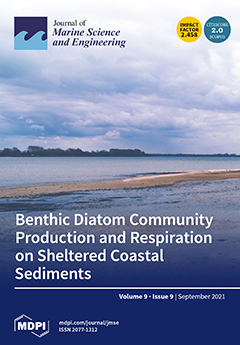Synechococcus is a dominant genus of the coastal phytoplankton with an effective contribution to primary productivity. Here, the phylogenetic and phenogenetic composition of
Synechococcus in the coastal Yellow Sea was addressed by sequencing marker gene methods. Meanwhile, its co-occurrence pattern with bacterial and
[...] Read more.
Synechococcus is a dominant genus of the coastal phytoplankton with an effective contribution to primary productivity. Here, the phylogenetic and phenogenetic composition of
Synechococcus in the coastal Yellow Sea was addressed by sequencing marker gene methods. Meanwhile, its co-occurrence pattern with bacterial and eukaryotic microbes was further investigated based on the construction of networks. The result revealed that
Synechococcus abundance ranged from 9.8 × 10
2 cells mL
−1 to 1.6 × 10
5 cells mL
−1, which was significantly correlated to sampling depth and nutrient contents of nitrite, ammonia, and dissolved silicon. A total of eight
Synechococcus phylogenetic lineages were detected, of which clade III was dominant in most of the samples. Meanwhile, clade I increased along the water column and even reached a maximum value of 76.13% at 20 m of station B. Phenogenetically,
Synechococcus PT3 was always the predominant pigment type across the whole study zone. Only salinity was significantly correlated to the phenogenetic constitution. The networks revealed that
Synechococcus co-occurred with 159 prokaryotes, as well as 102 eukaryotes including such possible grazers as Gymnodinium clades and Alveolata. Potential function prediction further showed that microbes co-occurring with
Synechococcus were associated with diverse element cycles, but the exact mechanism needed further experimentation to verify. This research promotes exploring regularity in the genomic composition and niche position of
Synechococcus in the coastal ecosystem and is significant to further discuss its potential participation in materials circulation and bottom-up effects in microbial food webs.
Full article





